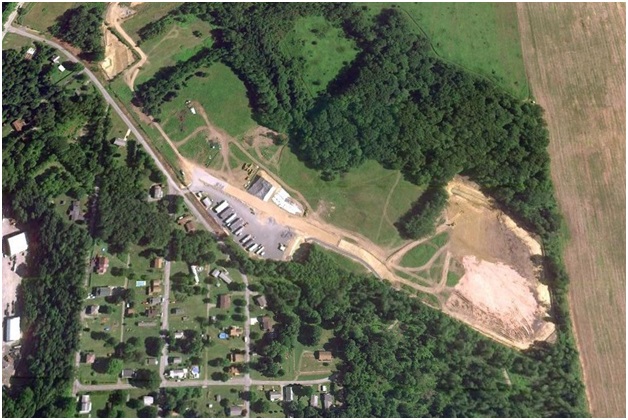I have blogged many times about the problems of cleaning up nuclear contamination. The federal government and the nuclear industry are always telling us that nuclear power reactors will be safe, cheap and low carbon sources of energy. But they are not so vocal about all the contaminated sites that are still being cleaned up after decades of work such as the Hanford Nuclear Reservation.
The Shallow Land Disposal Area is in Parks Township, about twenty miles north of Pittsburgh. Large amounts of radioactive waste were buried at the SLDA decades ago by Nuclear Materials & Equipment Corporation, a local company that worked on nuclear projects for the federal government and other organizations. SLDA was eventually purchased by Babcock & Wilcox, an energy products and services company.
The Army Corp of Engineers has spent years planning for the cleanup of SLDA. In 2011, the Corp began excavating one of the ten known trenches that contained nuclear waste. After only a few weeks of digging, the excavations were stopped. The Corp stated that the a contractor had violated safety protocols. In addition, it was reported that a "unexpectedly large amount of complex materials" were discovered during excavations. When asked what the materials were, the Corp would not comment. Shortly thereafter, the Corp classified some of the information about the SLDA based on a specific security rule that deals with "special nuclear material." Plutonium and enriched uranium suitable for use in making nuclear weapons are covered by this security rule.
Earlier this month, the Corp presented the revised cleanup plan for the SLDA. They said that what was discovered during the 2011 excavations revealed “an unanticipated and immediate need for fundamental changes to site operations.” Originally, the cost of cleanup was estimated to be around forty four million dollars. Purchase of additional safety equipment, adding more personnel and changing procedures have now raised the estimated cost of cleanup to four hundred and twelve million dollars, roughly ten times the original estimate.
One of the reasons for the increased cost estimate was "to prevent a nuclear criticality." If enough fissionable materials such as plutonium and/or enriched uranium are brought together, they could produce a nuclear chain reaction that would be catastrophic with possible release of a great deal of radiation.
The Corp also reported that they were not sure about what else they might find at the SLDA. There could be more radioactive materials that have not been discovered yet. Both critics of the cleanup and contractors have reviewed historical documents and concluded that there is evidence of burial sites other than the known ten trenches. The revised plan for the site cleanup calls for excavations to begin in 2017 and continue for up to ten years.
There are many other sites in the U.S. where nuclear waste has been buried over the decades since the 1950s. A great deal of this work was done for the Department of Defense and there was little concern about environmental contamination. In addition, there was also very poor record keeping. Soon or later, these sites will have to be cleaned up or radioactive materials will keep escaping into the ecosystem and posing a threat to public health.
Shallow Land Disposal Area:
